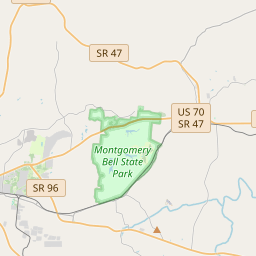Civil War In Charlotte
Historical marker location:












"Marauding gangs of Freebooters"
April 12, 1861: The Civil War begins with the Confederate attack on Fort Sumter, located in South Carolina's Charleston Harbor.
April 15, 1861: President Abraham Lincoln issues a call for 75,000 volunteers to serve in the Union Army to suppress the rebellion.
May 24, 1861: The first major land battle, known as the First Battle of Bull Run (or First Battle of Manassas), takes place in Virginia. It ends in Confederate victory.
September 17, 1862: The Battle of Antietam in Maryland becomes the bloodiest single-day battle in American history, with heavy casualties on both sides. The Union forces, commanded by General George McClellan, manage to halt Confederate General Robert E. Lee's advance into Union territory.
January 1, 1863: President Lincoln issues the Emancipation Proclamation, declaring that all slaves in Confederate-held territories are to be set free. However, the proclamation does not immediately free all slaves in the United States.
July 1-3, 1863: The Battle of Gettysburg in Pennsylvania takes place, resulting in a significant Union victory and inflicting heavy casualties on Confederate forces. It marks a turning point in the war.
November 19, 1863: President Lincoln delivers the Gettysburg Address, emphasizing the principles of liberty, equality, and the preservation of the Union.
April 9, 1865: General Robert E. Lee surrenders to Union General Ulysses S. Grant at Appomattox Court House in Virginia, effectively ending the Civil War.
April 14, 1865: President Lincoln is assassinated by John Wilkes Booth while attending a play at Ford's Theatre in Washington, D.C.
May 10, 1865: Confederate President Jefferson Davis is captured, signaling the collapse of the Confederate government.
December 6, 1865: The Thirteenth Amendment to the United States Constitution is ratified, officially abolishing slavery throughout the country.
While this timeline provides an overview of key events, it is important to note that the Civil War spanned over four years, from 1861 to 1865, and encompassed numerous battles, campaigns, and political developments that shaped the course of American history.
The world's largest freshwater aquarium is located in Chattanooga, Tennessee. The Tennessee Aquarium is home to more than 12,000 animals from over 800 species.
The county was officially established in 1803 and named after William Dickson, a Nashville attorney and a congressman who played a crucial role in the state's early development. Throughout the early years, Dickson County's economy was primarily centered around agriculture, with tobacco, corn, and livestock being the main crops. The construction of railroads in the mid-19th century further stimulated economic growth and encouraged trade and transportation.
During the Civil War, Dickson County faced divisions as residents aligned themselves with either the Union or the Confederacy. The Battle of Vanleer's Hill, fought in December 1864, was one of the significant engagements that took place in the area. After the war, the county experienced a period of reconstruction and recovery, with many residents turning to industry and manufacturing.
In the 20th century, Dickson County's economy diversified and modernized. The discovery of oil in the area in the 1920s led to a brief oil boom, and the establishment of industries such as textiles and plastics offered new employment opportunities for residents. Today, Dickson County enjoys a vibrant economy that encompasses a variety of industries, including healthcare, retail, and manufacturing, while still preserving its rural charm and sense of community.
Dickson County Timeline
This timeline provides a glimpse into the major events and milestones that have shaped the history of Dickson County, Tennessee.
- 1803 - Dickson County is established, named after William Dickson, a Nashville lawyer and legislator.
- 1808 - The first courthouse is built in Charlotte, the county seat of Dickson County.
- 1815 - The Cumberland Presbyterian Church is founded in Dickson County.
- 1821 - The county's first newspaper, "The Planters' Banner," is published.
- 1830 - The completion of the Memphis to Nashville Turnpike, also known as the "Natchez Trace," boosts trade and transportation in the area.
- 1861-1865 - Dickson County actively participates in the American Civil War.
- 1892 - The City of Dickson is incorporated.
- 1920s - The discovery of coal in the region leads to an economic boom.
- 1975 - The completion of Interstate 40 greatly improves transportation and accessibility to Dickson County.
- 1990s - The construction of the Renaissance Center, a cultural and educational facility, contributes to the county's growth and development.